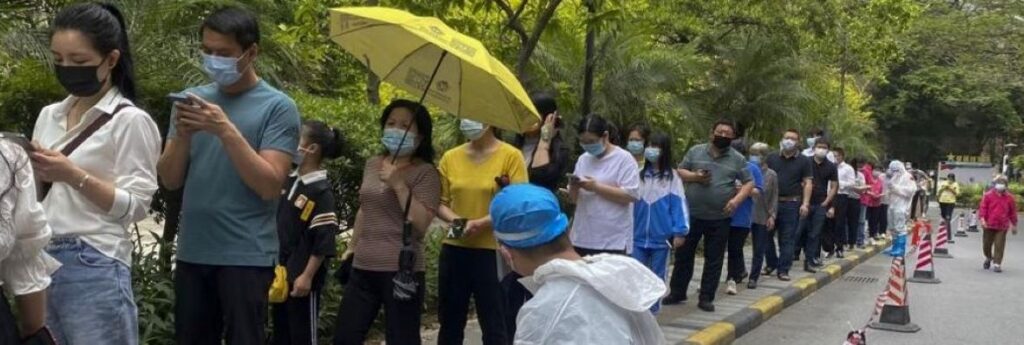Despite just 27 cases reported, the manufacturing hub of Guangzhou closed itself to most arrivals Monday as China battles a major COVID-19 surge in its big eastern cities, most notably Shanghai.
No such lockdown has yet been announced for Guangzhou, a metropolis of 18 million northwest of Hong Kong that is home to many top companies and China’s busiest airport; however, in light of China’s “zero-COVID” strategy of handling outbreaks with strict isolation and mass testing, primary and middle schools have been switched to and an exhibition centre was being converted into a makeshift hospital after authorities said earlier that they would begin citywide mass testing.
Only citizens with a “definite need” to leave Guangzhou can do so, and only if they test negative for the virus within 48 hours of departure, city spokesperson Chen Bin said in a social media announcement.
Shanghai has taken the brunt of the rise of COVID cases in Shanghai, with another 26,087 cases announced on Monday, only 914 of which showed symptoms. The city of 26 million is under a tight lockdown, with many residents confined to their homes for up to three weeks and concerns growing over the effect on the economy of China’s largest city.
China’s government and the entirely state-controlled media are growing increasingly defensive about complaints over the COVID-19 prevention measures, censoring content online and rebuking foreign critics.
Foreign Ministry spokesperson Zhao Lijian on Sunday said China had “lodged solemn representations with the US” after the State Department advised Americans to reconsider traveling to China due to “arbitrary enforcement” of local laws and COVID-19 restrictions, particularly in Hong Kong, Jilin province and Shanghai. US officials cited a risk of “parents and children being separated.”
China was “strongly dissatisfied with and firmly opposed to the US side’s groundless accusation against China’s epidemic response,” Zhao said.
Despite that, and indications the hardline policy is being dictated by head of the ruling Communist Party Xi Jinping, China has rejected any notion that its response is political in nature. Xi has demanded social stability above all else in the runup to a key party congress later this year at which he is expected to bestow on himself an unprecedented third term as party leader.
The English-language China Daily acknowledged that Shanghai’s measures are “far from perfect,” and pointed to the firing last week of three local officials for failing in their duties. But it said that shouldn’t become an “excuse to politicize the event and blame China.”
Zhao issued a further defense of China’s virus controls on Monday, saying they have “proven to be effective and in line with its national conditions and needs, and have made an important contribution to the global fight against the epidemic.”
Shanghai has brought in thousands of additional health workers from other cities, provinces, and the military. Despite the large number of cases, no new deaths have been reported in the Shanghai wave, possibly because the omicron variant is less deadly than older variants.
City authorities also say they have secured daily supplies for residents, following complaints about deliveries of food and other necessities.
Residents have resorted to group buying of groceries because they are not allowed to leave their buildings, with only partial success in obtaining needed items.
Officials say they will begin relaxing restrictions beginning with areas where no new infections have been detected for two weeks. Residents will be allowed to move around their districts while remaining socially distanced. A second category will be allowed to move around their neighborhoods, while others will remain isolated in their homes.
The capital, Beijing, has seen relatively few restrictions, although the Erjiefang neighbourhood, including the famed 798 art district, has been cordoned off and classified as high risk after eight infections were reported there over the past two weeks.
China is facing one of its worst local outbreaks since the pandemic began. China is still mostly closed to international travel, even as most of the world has sought ways to live with the virus.

